1. Solar Roofing Tiles
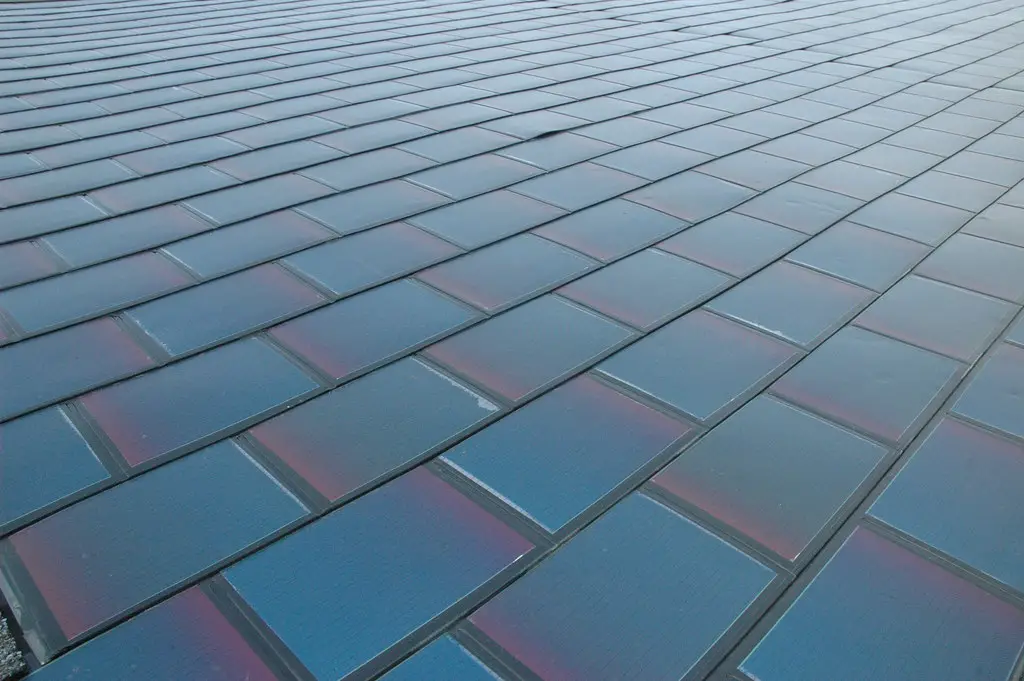
Solar roofing tiles seamlessly integrate solar energy technology into a home’s architecture, replacing bulky panels with sleek, shingle-like tiles. These tiles are designed to blend in with traditional roofing materials while capturing sunlight to generate power. Homeowners no longer need to choose between aesthetics and energy efficiency, as these tiles provide both. Solar tiles are also highly durable, capable of withstanding harsh weather conditions like hail and heavy winds. Additionally, they can increase property value, as homes with built-in energy solutions are becoming more desirable in the real estate market.
According to Solar Power World, these tiles are particularly beneficial for homeowners in areas with strict HOA regulations that discourage conventional solar panels. With advancements in efficiency and affordability, solar tiles are quickly becoming a mainstream option for residential solar installations. They offer an attractive way to harness renewable energy, making them a pivotal innovation for the future of sustainable living. As manufacturing costs decrease, more homeowners will embrace this technology to achieve energy independence.
2. Solar-Powered HVAC Systems
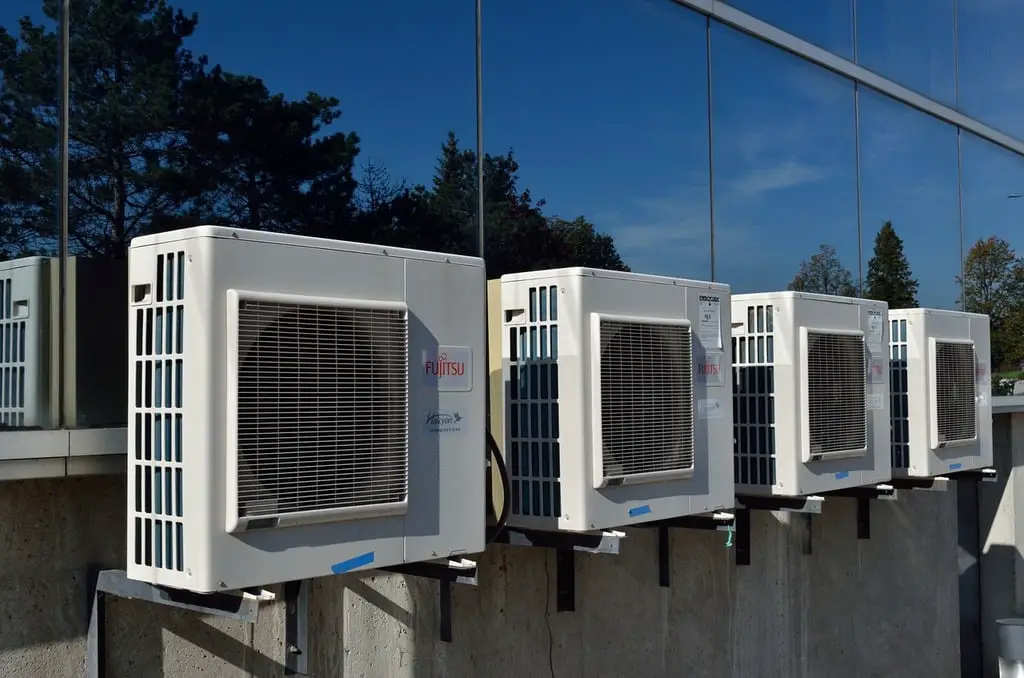
Solar-powered HVAC systems use renewable energy to heat and cool homes, significantly reducing reliance on fossil fuels. By integrating solar panels with HVAC units, these systems provide consistent comfort while cutting energy bills. Advanced models can store excess solar power in batteries, ensuring uninterrupted operation during cloudy days or at night. These systems are especially beneficial in regions with extreme temperatures, where heating and cooling demands are high.
As highlighted by Energy.gov, solar HVAC systems are not only cost-effective but also environmentally friendly, reducing a home’s carbon footprint. They are increasingly compatible with smart home technologies, allowing homeowners to optimize energy use through mobile apps. The combination of efficiency, sustainability, and convenience makes these systems a game-changer for residential energy consumption. With ongoing innovation, solar HVAC systems are poised to become a standard feature in energy-efficient homes.
3. Solar Water Heaters
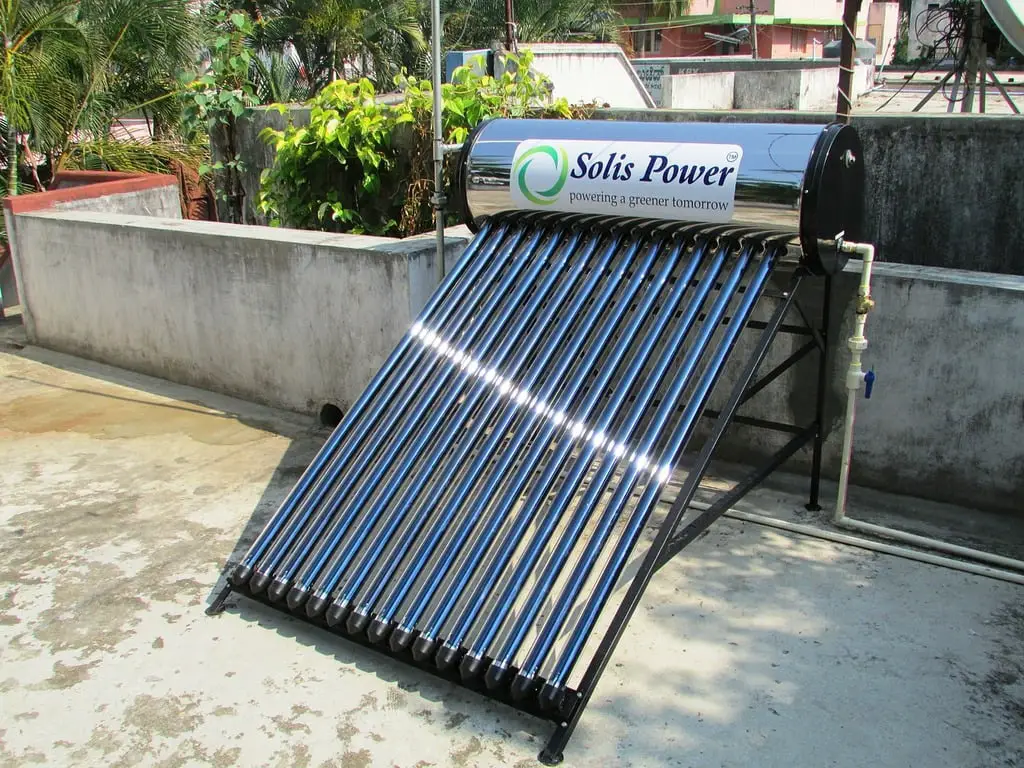
Solar water heaters use thermal energy from the sun to heat water for household use, offering a cost-effective alternative to electric or gas-powered systems. These systems typically include solar collectors installed on the roof and an insulated storage tank. By utilizing free and abundant solar energy, homeowners can reduce water heating costs by up to 50%. Solar water heaters are particularly effective in sunny climates, where they can provide hot water year-round.
According to The Solar Foundation, solar water heating systems also have a quick return on investment, typically paying for themselves within five to ten years. They contribute to energy conservation by lowering overall household energy demands. Additionally, many governments offer tax incentives and rebates to encourage adoption, further increasing their appeal. With their ability to reduce costs and emissions, solar water heaters are a crucial innovation for achieving energy-efficient homes.
4. Solar Window Film
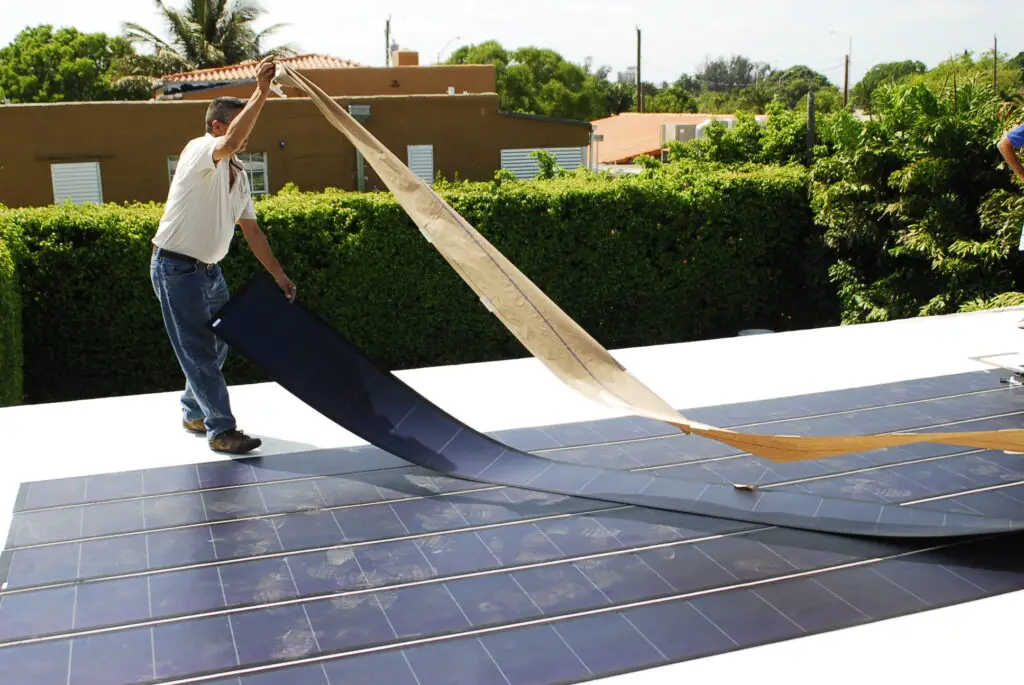
Solar window film enhances energy efficiency by blocking UV rays and reducing heat transfer through windows. This innovative material is applied directly to glass surfaces and can significantly lower cooling costs in summer. Additionally, it protects furniture, flooring, and artwork from sun damage while maintaining natural light levels indoors. Solar window film is available in various transparency levels, allowing homeowners to balance privacy and brightness.
As detailed by Green Building Advisor, this technology is a low-cost solution for reducing energy consumption. It works well in both residential and commercial settings, offering immediate energy savings without major structural changes. Advances in smart film technology now allow for dynamic tinting, where windows adjust their opacity based on sunlight intensity. Solar window film is an accessible and versatile option for homeowners seeking to reduce their environmental impact.
5. Solar-Powered Smart Home Devices
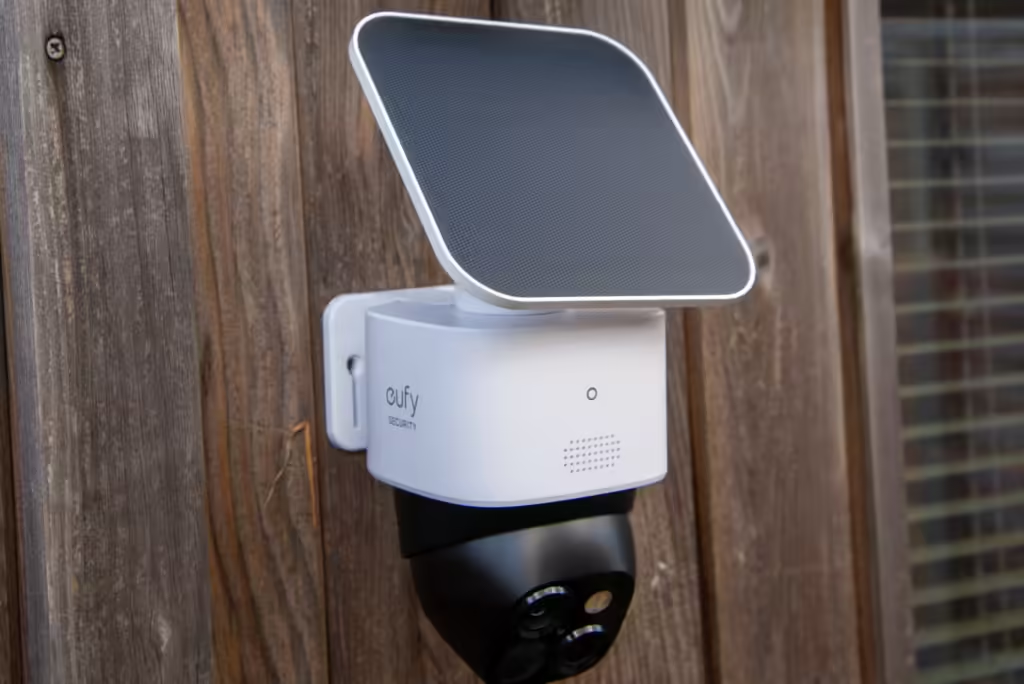
Solar-powered smart home devices, such as lights, security cameras, and sensors, are reshaping how we think about energy usage. These devices operate independently of the grid, using built-in solar panels to generate power. They are ideal for enhancing home security and automation without increasing electricity bills. Additionally, many of these devices include energy storage options, ensuring functionality during power outages.
According to TechRadar, solar-powered smart devices are particularly beneficial in remote areas or regions prone to blackouts. They combine sustainability with advanced technology, offering homeowners greater control over energy consumption. As more smart home devices integrate solar capabilities, they will play a key role in creating energy-efficient households. These innovations demonstrate how small changes can collectively make a significant environmental impact.
6. Community Solar Programs

Community solar programs allow multiple households to share the benefits of a single solar installation. These programs are especially beneficial for renters and homeowners with shaded roofs who cannot install solar panels themselves. Participants buy or lease a share of the solar energy generated, which is then credited to their utility bills. Community solar also fosters a sense of collective action, as neighbors work together toward a common goal of sustainability.
As described by Solar United Neighbors, community solar programs can lower electricity costs for participants while supporting renewable energy growth. They also offer an accessible entry point for those unable to afford individual solar systems. With increased federal and state support, these programs are expanding rapidly across the country. Community solar represents a scalable and inclusive approach to renewable energy adoption, making it easier for everyone to benefit from solar power.
7. Solar Carports
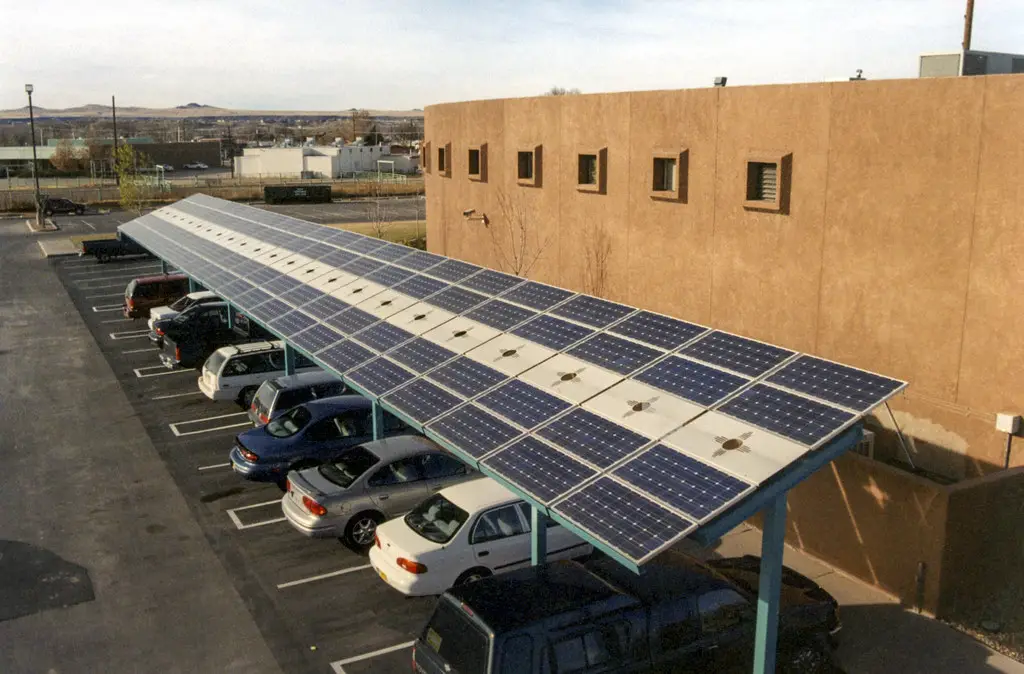
Solar carports combine shelter for vehicles with energy generation, transforming parking areas into sustainable power sources. These structures are equipped with solar panels on their roofs, generating electricity for residential or community use. Solar carports can also include EV charging stations, making them a practical addition to homes with electric vehicles. They maximize underutilized space while reducing overall energy costs.
As noted by CleanTechnica, solar carports are increasingly popular in urban and suburban areas where rooftop solar may not be feasible. They provide dual functionality by protecting vehicles from the elements and generating clean energy. Some models even feature battery storage systems, allowing excess energy to be used during peak demand periods. Solar carports exemplify how innovative design can integrate sustainability into everyday life.
8. Solar Batteries with AI Optimization
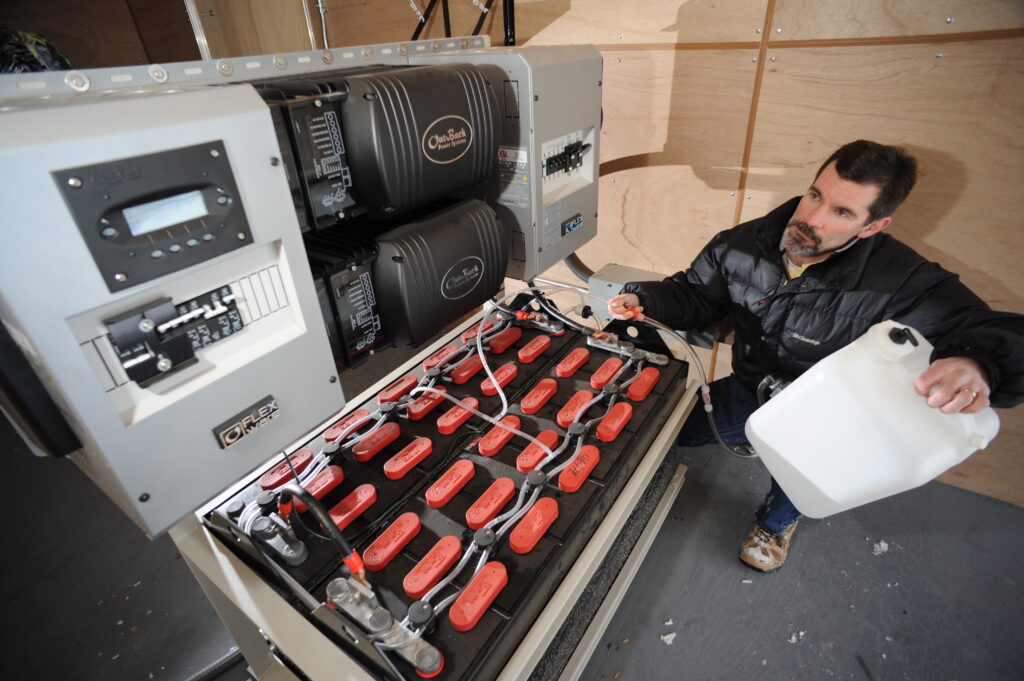
Solar batteries with AI optimization store excess energy generated by solar panels and intelligently manage its usage. These systems analyze consumption patterns to prioritize energy delivery when it’s most needed. AI-enhanced batteries can also predict weather conditions to maximize efficiency, ensuring consistent power availability. Homeowners benefit from reduced reliance on the grid and greater energy independence.
According to Renewable Energy World, these systems are ideal for households aiming to achieve net-zero energy consumption. They also provide critical backup power during outages, enhancing home resilience. With advancements in battery technology and AI capabilities, solar batteries are becoming more efficient and affordable. They represent a pivotal innovation for making solar energy more accessible and practical for everyday use.
9. Solar-Powered Desalination Systems
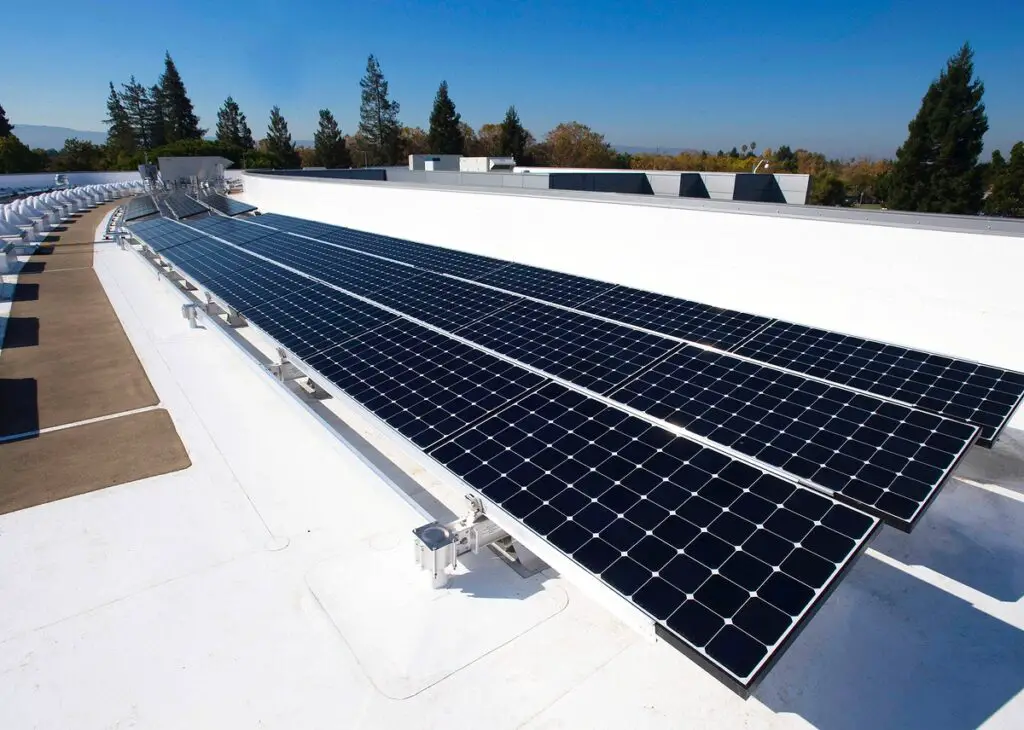
Solar-powered desalination systems use solar energy to convert seawater into potable water, offering an eco-friendly solution to water scarcity. These systems harness thermal or photovoltaic solar power to drive the desalination process, making clean water accessible in arid regions. By combining renewable energy with innovative water filtration technologies, they provide an energy-efficient alternative to traditional desalination methods.
According to National Geographic, solar desalination systems are particularly beneficial in coastal areas with limited freshwater resources. They reduce the reliance on energy-intensive processes while addressing critical water needs. Emerging designs now include portable desalination units, which are ideal for off-grid communities and disaster relief scenarios. These systems showcase the potential of solar energy to address global challenges beyond electricity generation, paving the way for sustainable water solutions.
10. Solar-Powered EV Chargers
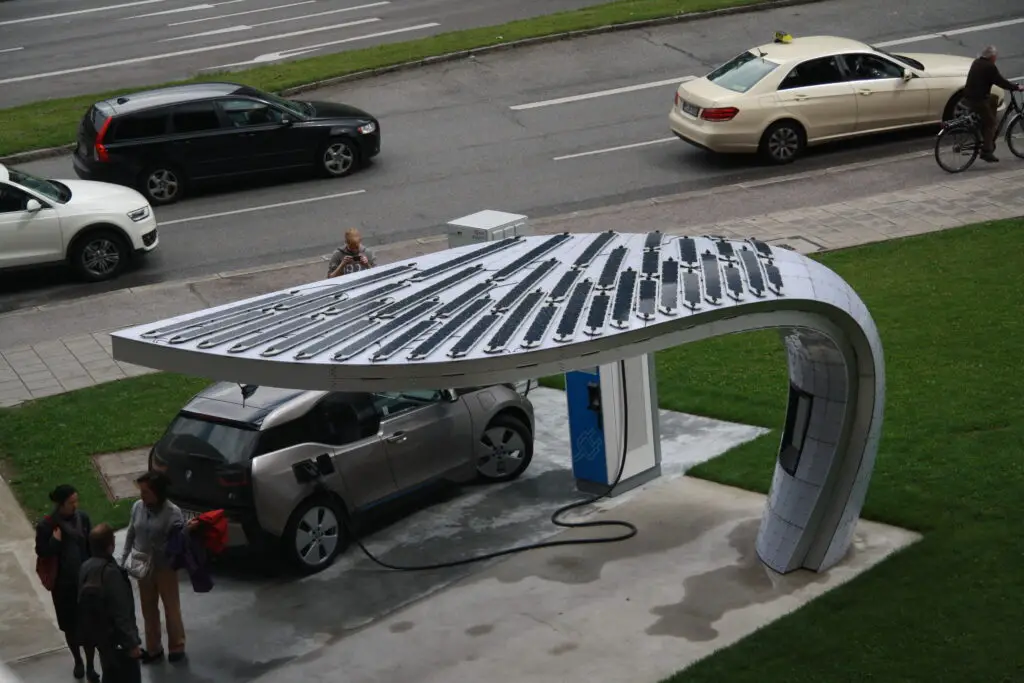
Solar-powered EV chargers use photovoltaic panels to generate electricity for charging electric vehicles, reducing reliance on the grid. These chargers are often installed at homes, workplaces, and public spaces, allowing EV owners to recharge their vehicles sustainably. Advanced models include battery storage, ensuring consistent energy availability even during cloudy weather.
As highlighted by Electrek, solar-powered chargers are key to creating a fully renewable transportation ecosystem. They lower the overall carbon footprint of EVs and promote clean energy adoption. Additionally, they reduce charging costs, making EV ownership more economical. With the growing adoption of electric vehicles, solar-powered chargers are set to become an integral part of energy-efficient homes and communities.
11. Solar-Powered Appliances

Solar-powered appliances, such as refrigerators, ovens, and air conditioners, operate using energy directly generated by solar panels. These appliances are designed to maximize efficiency while minimizing energy consumption, making them ideal for off-grid or low-energy homes. They often include built-in solar panels or are compatible with residential solar systems.
According to Energy Star, these appliances help reduce utility bills and decrease household carbon footprints. Advances in technology have made solar-powered appliances more reliable and affordable, allowing homeowners to integrate them seamlessly into their daily lives. As sustainability becomes a priority, the demand for solar-powered appliances is expected to grow, contributing to the shift toward greener lifestyles.
12. Solar-Powered Home Automation Systems
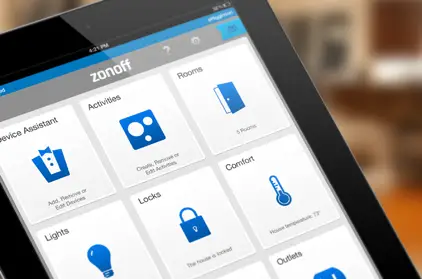
Solar-powered home automation systems combine the convenience of smart home technology with the sustainability of solar energy. These systems use solar panels to power smart devices, including thermostats, lights, and security systems, ensuring efficient energy use. By integrating solar power with IoT devices, homeowners can optimize energy consumption while reducing environmental impact.
As noted by Smart Home World, solar-powered automation systems offer significant energy savings and enhanced control over home environments. They are particularly valuable in areas prone to power outages, as they ensure uninterrupted functionality. With advancements in AI and machine learning, these systems are becoming increasingly intelligent, adapting to user preferences and energy needs. Solar-powered automation represents the next step in creating energy-efficient, self-sustaining smart homes.
13. Solar-Powered Outdoor Lighting
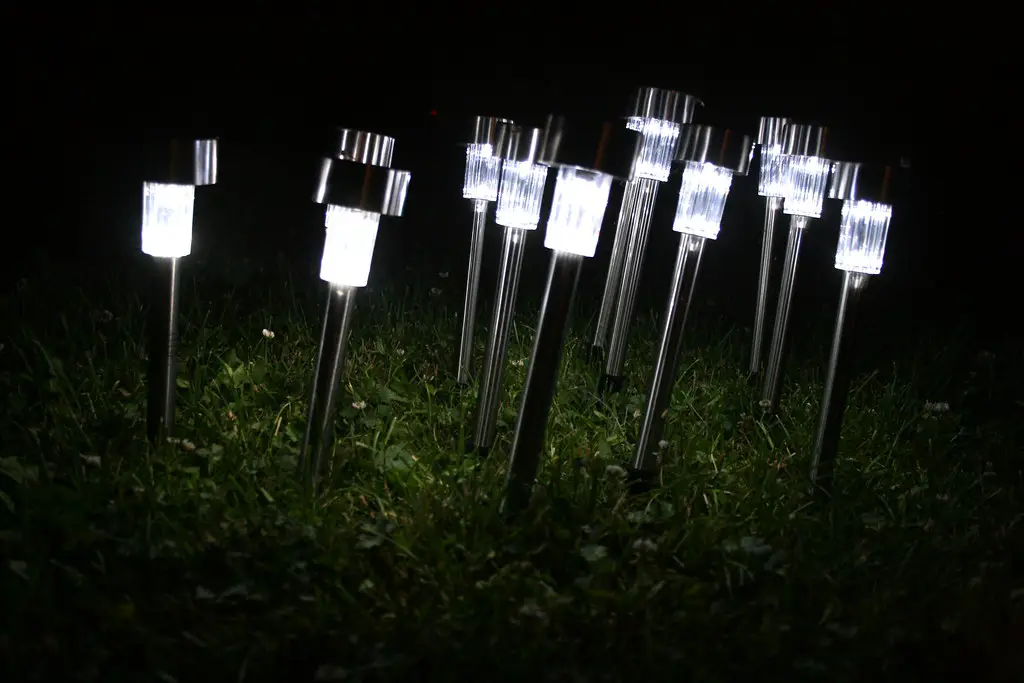
Solar-powered outdoor lighting uses photovoltaic panels to illuminate pathways, gardens, and public spaces. These lights charge during the day and automatically turn on at night, providing a cost-effective and eco-friendly lighting solution. They are available in various styles and designs, from decorative string lights to high-intensity security floodlights.
According to Lighting Global, solar-powered outdoor lighting enhances safety and aesthetics while eliminating the need for traditional wiring. Many models include motion sensors and programmable features, adding convenience and efficiency. They are particularly beneficial in remote areas and developing regions where access to electricity is limited. Solar-powered outdoor lighting showcases how simple, accessible innovations can have a profound impact on energy consumption and sustainability.
14. Solar Thermal Energy for Heating and Cooling
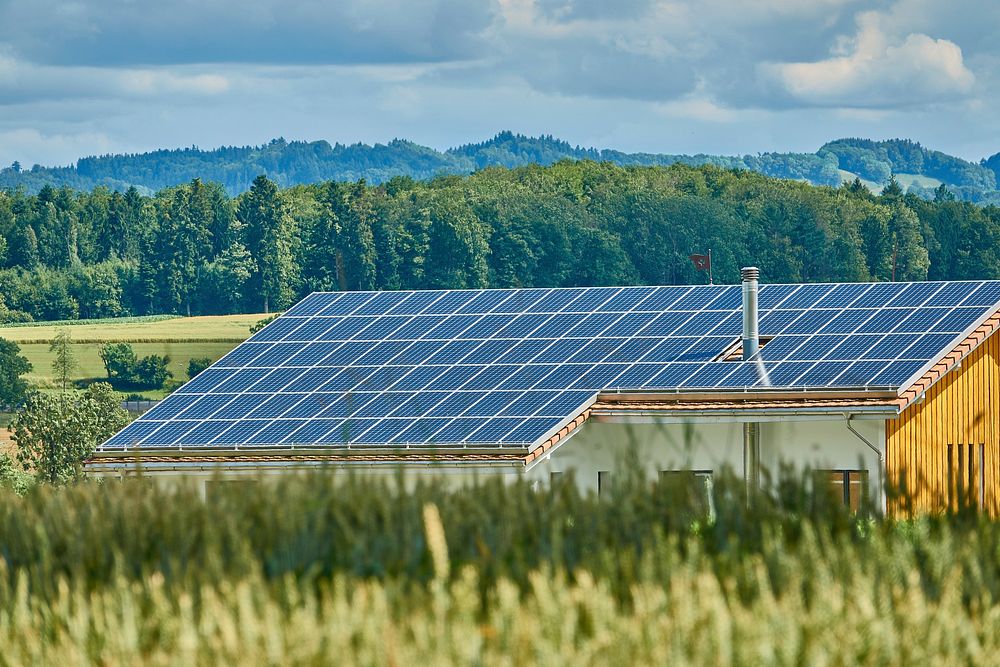
Solar thermal energy systems harness sunlight to provide heating and cooling for residential and commercial buildings. These systems use solar collectors to capture and transfer heat, reducing the need for conventional energy sources. They are particularly effective for space heating, water heating, and even air conditioning through solar absorption cooling.
As detailed by SEIA, solar thermal systems are highly efficient, converting sunlight into usable energy with minimal loss. They are a versatile solution for reducing energy costs and environmental impact, especially in regions with high solar radiation. Emerging hybrid systems combine solar thermal with photovoltaic technologies, offering even greater efficiency and reliability. By leveraging solar thermal energy, homeowners can create sustainable and cost-effective climate control systems, contributing to a greener future.
